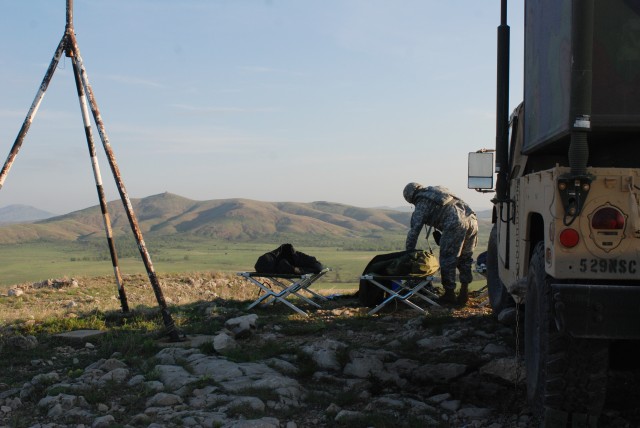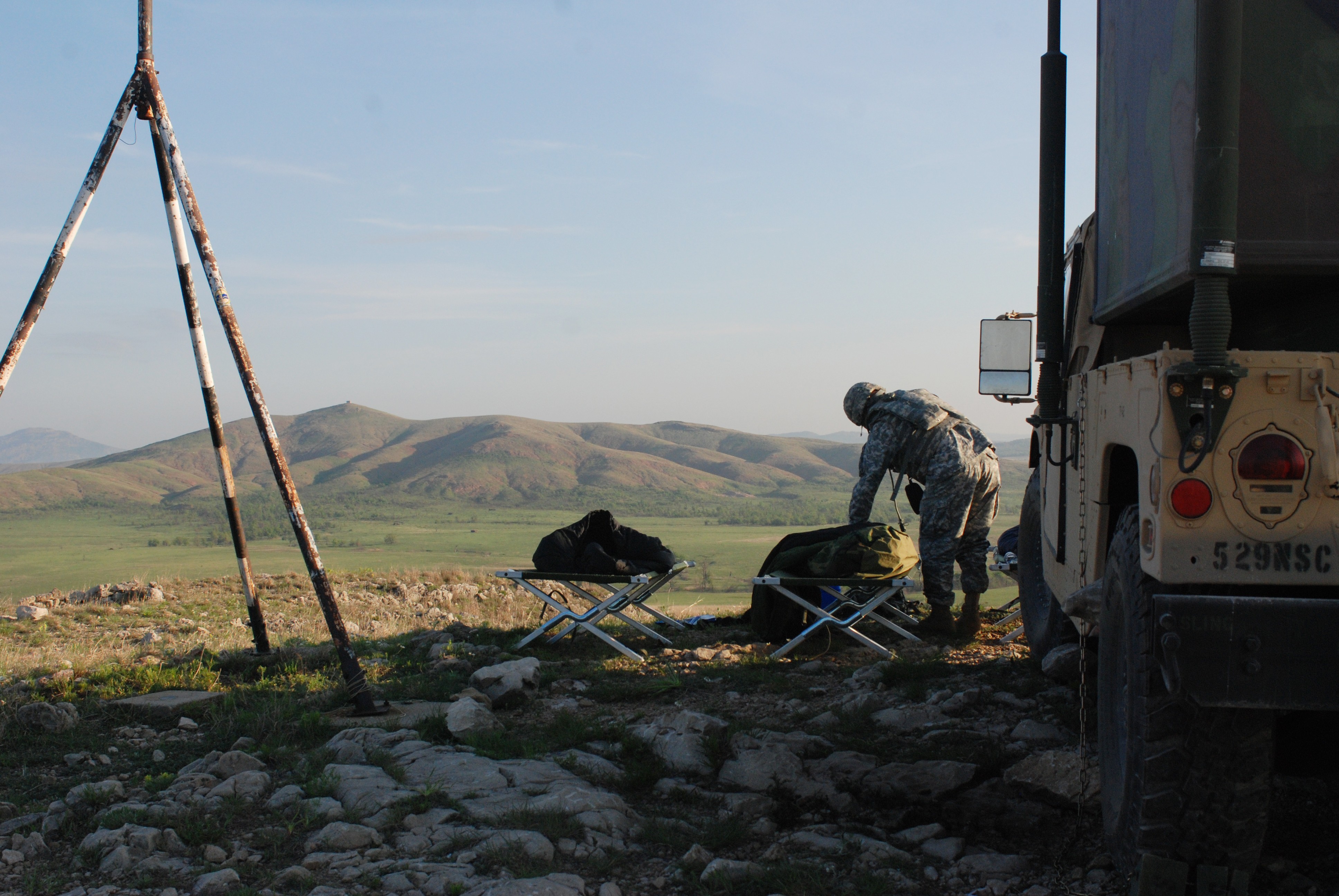FORT SILL, Okla. - The spine is an interesting piece of biological hardware. Above the waist, it serves as the only support column for the human body and anything it carries. Structurally, it must be very strong, but it must also be flexible. Foremost among its duties, however, is housing the central nervous system, the information network of the entire body. Without it, we are lost.
For the 214th Fires Brigade, and for much of the modern Army, the central nervous system is also comprised of a single, dynamic entity: the corps of communications personnel. The brigade got to test its communications during a 10-day exercise in April.
The communications staff office, often simply referred to as S6, must be strong and flexible, bending to the mission and enduring the massive demands of the modern Army's communications networks, said Staff Sgt. Jimmy R. Young II, the senior data systems integrator for the 214th Fires Brigade.
Inside the tactical operations command headquarters, the role of communications is evident. Radio transmissions crackle in the background as they are relayed by S6 personnel manning lone, mountain-top stations. Large, multi-display computer setups dominate the working spaces while integrated information systems aggregate multiple data transmissions into a complex computing system dubbed CPOF, the command post of the future. Each feed is the result of Soldiers trained to monitor and maintain these systems.
"S6 is the backbone, if you will, of any operation. Without communications [personnel], you can't talk on the battlefield," he said.
For the Soldiers of the 529th Signal Company who man the retransmission points, flexibility is a necessity for their mission. Acting as a relay point for communications between forward units and headquarters, S6 Soldiers must often strategically reposition themselves to accommodate the movements of combat elements, said Pfc. Matthew Aldrich, a signal support systems specialist with the 529th SC.
Maintaining that flexibility, however, is what allows army units to communicate over long distances and inhospitable terrains, said Spc. Timothy Heam, a signal support systems specialist with the 529th SC.
"We just go out here last night. As a [retransmission] team, we're a lot smaller than the bigger [communications] teams. So, when the signal broke down, we're the ones that had to pick up and move," Aldrich said.
The realm of communications encompasses so many different elements that Young said he must be the subject matter expert in approximately 17 different areas to perform his duties as a data systems integrator. From telephones, to radio and satellite, to encrypted and unencrypted data transmissions, Young and his staff of junior enlisted Soldiers must constantly update their knowledge base, he said.
"Most of them learn it on the fly. It's all hands-on," said Young "It's a sink-or-swim job. It makes you think. It keeps you on your toes."
For a soldier who shipped out to basic on the same afternoon that he decided on the communications occupational specialty, Pvt. Christopher A. Bedwell, an information technology specialist with HHB, 214th FB, believes that keeping a technological advantage is one of the Army's greatest assets.
"It's the backbone of most things we do," he said.
The strength of that advantage, he continued, is largely due to the non-commissioned officers he sees in the field.
"I've got great NCOs teaching me and showing me the way. I can't ask for any better NCOs," said Bedwell.
In a field that keeps apace of rapidly evolving technologies, the next generation of its leaders are already preparing for duty.
"One day I'll get to the point where I can do their job. Then, I'll be happy to take the reins," Bedwell added.
The importance of the development of military communications and its personnel is vital to the Army's mission, and part of its strategy for the future, said Col. Mike Cabrey, commander of the 214th FB.
The relevance of communications in modern military operations was further emphasized by Cabrey, who believes they are central to the overall function of the Army.
"No operations center can perform its function without the S6," he said.
As the Army moves forward, communications will likely play a large role in the future of battlefield operations, ensuring the continued need for quality S6 operations.
"In an environment where we rely so heavily on staying ahead of enemy decision making, our technology gives us a distinct advantage to gathering, sharing and disseminating information, which all depends on communications," said Cabrey.
Always proud of his duty and his Soldiers, Young parted with an oft-repeated phrase in the communications field.
"You can talk about us, but you can't talk without us," he said.


Social Sharing